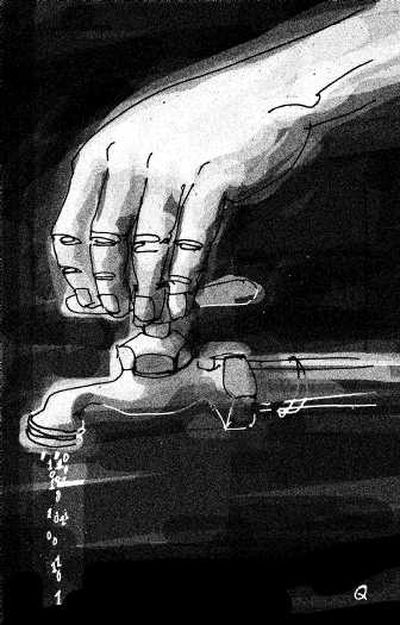Data hogs, beware

Broadband Internet providers such as Comcast Corp. or Time-Warner Cable look back fondly on the good old days of 2000 and 2001, when their only serious network nemesis was a file-sharing program used by kids, called Napster.
Despite the millions of people who used Napster in its heyday, those music downloaders seldom maxed out the network capacity. To a large extent, the Napster impact was mostly felt on college networks, not the commercial providers like Comcast, which provides cable Internet, or Qwest, which provides broadband DSL to Spokane area customers.
Now, six years since the peak of Napster activity, Web users have moved on to newer and more clever sharing programs. The new breed of file-transfer applications relies on a protocol called BitTorrent, which allows users across the planet to move huge gobs of data to many other users easily.
Widespread adoption of BitTorrent and other file-sharing programs has prompted companies like Comcast and Qwest to hire network traffic “cops” to flag bandwidth superhogs — customers who download and upload immense amounts of data.
The enforcers in this case are software and hardware tools that can spot bandwidth consumption at above-average levels. Those tools, according to many Web-watchers, now include traffic-throttling options — which force those superhogs to use lower and slower speeds when uploading or downloading files.
Network management firm Ellacoya estimates that 20 percent of all Internet traffic today is devoted to sending or receiving video — everything from people uploading movies to YouTube to people sending each other family movies. Comcast, which depends on maintaining high-speed service for millions of customers across the country, views superhogs as a key concern, said Spokane Comcast General Manager Kenneth Watts.
Watts and officials from Qwest and Time-Warner Cable don’t specify what constitutes “excessive” use. He said that the general view is that residential broadband customers agree to use their Internet service in a way that doesn’t compromise the overall efficiency of the company’s network.
When Comcast does spot customers using immense amounts of bandwidth, the company contacts them to identify the problem, said Comcast spokesman Walt Neary. “The vast majority, 99.99 percent, don’t have to worry about this,” Neary noted.
If the customer establishes he has a valid reason for using that much bandwidth, companies like Comcast or Qwest suggest the person upgrade from residential to a business-level subscription.
How the broadband providers identify that heavy use is not disclosed. Time-Warner Cable spokesman Alex Dudley said the company won’t divulge its network-tracking tools. “We don’t want to give away any of our competitive advantage,” said Dudley. Time-Warner operates high-speed cable systems in Post Falls and Coeur d’Alene.
This summer a Comcast Puget Sound broadband customer was shut down after reportedly continuing a pattern of heavy uploading and downloading. He told a Seattle newspaper Comcast contacted him two months prior to the shutoff, warning him he was using too much bandwidth. He asked Comcast for a definition of “excessive” use but never got a reply, according to Seattle news reports.
No similar incident has been reported in Spokane or North Idaho.
When Comcast does contact superhogs, the usual pattern has been acceptance of the company’s need to maintain network efficiency, said Neary.
“I’d say that three out of four (after contacted) either ratchet down their use, or they convert to a business account, or they move on to another provider,” he said.